
Pg.
WHAT’S
NEXT WITH THE CFA’S BARGAINING
CAL POLY SAN LUIS OBISPO’S NEWS SOURCE MARCH 5, 2024 | MUSTANGNEWS.NET MUSTANG
NEWS
4
CAL POLY FAMILY TRICKED BY AI SCAM
Pg. 3 A
Pg. 11
MADDEN
CONSTRUCTION SETBACKS
INSIDE THE
CENTER’S
NEWS
Lauren Emo Editor
Leila Touati Assistant Editor
Ashley Bolter
Kathryn Clark
Caroline Ohlandt
Abby Gorman
Alex Kohm
Rocco Brichler
Kaitlyn Knopf
Matthew Muren
OPINION
Zoie Denton Editor
Erin Yarwood
Claudia Muñoz
Liz Nancett
Neta Bar
Tess Whitsett
SPORTS
Matthew Ho Editor
Nate Mills Social Media Director
Jonathan Sze
Noah Greenblatt
Lano Somotun
Sergio Romero
jack bynum
Katie Wright
Jordan Singh
Ty Soria
Dylan Allen
Charlie Wiltsee
Michael Hernandez
ARTS & STUDENT LIFE
Riya Parekh Editor
Sydnie Bierma
Carly Heltzel
Katherine Lu
Makayla Khan
Liv Mehran
Maya Ziv
Arabel Meyer
Vinithra Seshan
Bailee Isackson
Teah Swartzon
Krithi Sankar
Makena Locsin
DESIGN
Claire Lorimor Creative Director
Ariel Sherman
Angel Gaytan
Deanna Nguyen
Alejandro Rearte
Liz Ridley
Brandon Schwartz
Rain Mazumder
Tayler Kang
Kennedy Ray
Aviv Kesar
Maya Rotstein
VIDEO
Ari Lopez Video Manager
Cassandra Garcia
Mckenna Rodriguez
Madison Vernon
Natalie Levesque
Izzy Romero
Samuel Hronek
RJ Pollock
PHOTO
Lily Tenner Editor
Shae Ashamalla
Bobby Groth
Owen Roberts
Ashley Spinoglio
Annabelle Fagans
Mia-Isobel Craig
Brandon Bomberger
Maura Shernisky
Visruth Srimath Kandali
Juliete Seo
Alice Sukhostavskiy
SOCIAL MEDIA
Jessa Rosenthal Social Media Manager
Angela Passalacqua
Josie Wall
Avery Smigel
Lily Rivas
Tori Gordon
Sophia Pattison
DATA & INVESTIGATIONS
Elizabeth Wilson Editor
Archana Pisupati
Cole Pressler
Krithi Sankar
Amelia Wu
Naomi Vanderlip
Jeremy Garza
Masato Nandate
Brandon Kim
Tejasree Kandibanda
BILINGUAL
Edgar Bustillos Morales Editor
Emilia Pirir
Isabel Cruz Santiago
Jazmin Zarate
Kate McHugh
KCPR
LEADERSHIP
Emily Tobiason Content Director
Jordan Triebel KCPR News Director
Cindy Nguyen Art Director
Cayley O’Brien Programming/ Music Director
David Aronson Marketing Director
Sam Kohn Podcast Manager
Reilly Yuen Social Media Manager
KCPR NEWS
Jordan Triebel Director
Emmy Burrus Assistant Director
Sarina Grossi
Trevor Baumgardner
Natalie Levesque
Aidan Dillon
Layla Shuman
Izzy Romero
Mckenna Rodriguez
Jazmyn Chavez
Jada Griffith
Emma Montalbano
Fiona Hastings
Kat Orozco
Jessica Carp
Cole Pressler
Sergio Romero
Nate Mills
Mark Robinson
Riley Sullivan
Ryan Giacomini
KCPR CONTENT
Emily Tobiason Content Director
Amelia Nored Editorial Assistant
Alina Jafri
Angie Stevens
Emma Hughes
Fiona Hastings
Haley Ellis
Kat Orozco
Lulu David
Natasha Malinovsky
Olive Nelson
Sydney Osterbauer
MMG BUSINESS
ADVERTISING & PR
Matthew Ho & Yuka Shindo Advertising Team Managers
Trevor Baumgardner Special Sections Editor
Katharine Smith Marketing and Public Relations Director
Adrienne Liang Advertising Design Manager
McKenna Hauteman OnCampus Events Coordinator
Mackenzie Ryseff Marketing/PR Researcher
ADVERTISING DESIGNERS
Tristan Naoe
Amanda Wahl
Jenna Yost ADVERTISING
ACCOUNT EXECUTIVES
Ruby Beye
Ella Brees
Emma James
Alexander Poroy
Juliet Sasaura
Amanda Tahi
Xiomara Lopez
Tori Gordon



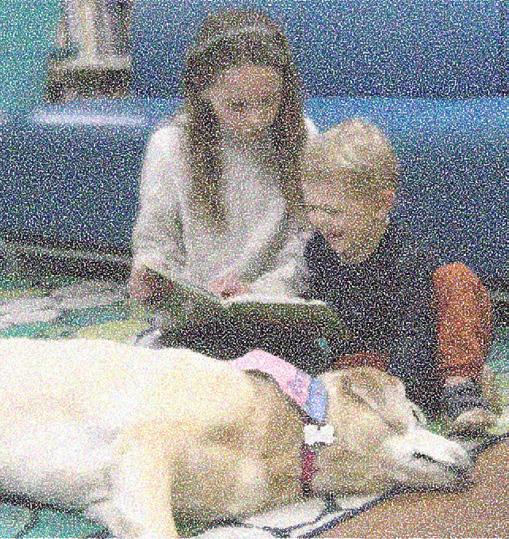

CFA TENTATIVE AGREEMENT APPROVED – WHAT COMES NEXT? AI VOICE CLONING CAUSES PHONE SCAMS, HITTING ONE CAL POLY FAMILY
SPECIAL SECTIONS WRITERS
LEADERSHIP
Lovejoy Editor in Chief MUSTANG NEWS TUESDAY, MARCH 5, 2024 UPFRONT 2 Cal Poly is in tiłhini, the Place of the Full Moon. We gratefully acknowledge, respect, and thank yakʔit yu tit yu yak tiłhini, Northern Chumash Tribe of San Luis Obispo County and Region, in whose homelands we are guests. IN THIS ISSUE
Managing Editor Claire Lorimor Creative Director Ari Lopez MNTV News Director Sarina Grossi Digital Director 03 STORY BY Abby Gorman DESIGNED BY Maya Rotstein 04 STORY BY Matthew Muren DESIGNED BY Ariel Sherman 05 06 08 WHERE TO FIND ADDICTION RECOVERY RESOURCES ON CAL POLY’S CAMPUS TWO CAL POLY PROFESSORS SAW A DISCONNECT BETWEEN SCIENCE AND SPANISH: HERE’S HOW THEY’RE BRIDGING THAT GAP LOCAL ‘PAWS TO READ’ PROGRAM HELPS KIDS WITH READING ANXIETY STORY BY Ashley Bolter DESIGNED BY Aviv Kesar STORY BY Jeremy Garza DESIGNED BY Alejandro Rearte STORY BY Katherine Lu DESIGNED BY Brandon Schwartz MUSTANG NEWS ADVISERS Jon Schlitt General Manager Pat Howe Editorial Adviser Kim Bisheff Digital Adviser Patti Piburn KCPR Adviser Brady Teufel Department Chair Richard Gearhart MNTV Adviser Stay Connected! Subscribe to the Roundup Newsletter!
Chloe
Emma Robertson
AI voice cloning causes phone scams, hitting one Cal Poly family
BY ABBY GORMAN
When Will Trapp’s parents called their son in a panic, convinced he had been in a horrible accident, he was at home studying.
Trapp, an interdisciplinary studies sophomore, was unaware that his family just heard his panicked voice over the phone. On the call, Trapp’s “voice” was followed by a “police officer” who detailed to his parents that ther son was involved in a gory car accident, leaving a pregnant woman in the other car injured.
Trapp’s parents then said that a so-called “public defender” instructed them to withdraw over $15,000 to cover their son’s bail at the San Luis Obispo jail. A courier would come to their home to pick up the money, the public defender said.
“It was really scary hearing my mom like that,” Trapp said. “I was pretty troubled by it in the week following.”
Trapp’s parents were not wrong in identifying the audio as their son’s voice. But, the car accident never happened and they never actually spoke to a police officer or attorney.
The Trapp family nearly fell victim to a type of scam that is becoming increasingly common, which involves AI technology called “voice cloning.”
Cal Poly computer engineering professor Foaad Khosmood explained that the technology relies on a combination of voice recordings from the individual and a large catalog of learned information.
Depending on the quality of the model the scammers used, the phone
call the Trapp family received could have only required a few minutes of speech, according to Khosmood.
You can get that from anywhere. People could be recording you just walking down the street. They could be Zoom recordings that you don’t know about.
FOAAD KHOSMOOD
Computer engineering professor
“You can get that from anywhere. People could be recording you just walking down the street. They could be Zoom recordings that you don’t know about,” he said. “Those companies that call and say it’s a tech support thing and record for quality, who knows what they’re going to do with it?”
However, Khosmood cautions people from becoming too paranoid about this technology, saying there are warning signs of voice cloning scams.“They might be able to imitate your voice, but they can’t imitate your style,” Khosmood said. “It’s all about how you say something. People’s vocabularies are very different.”
He also encourages people to ask questions that the actual person would know, as well as call the
individual at their normal phone number, as the Trapp family did.
Computer science senior Cameron Hardy believes it is important for the general public to become more aware of the potential of voice cloning technology.
“Once people are aware of it, I think it’s not as likely to work on everyone,” Hardy said. “I think the people that are most likely to be vulnerable to this, like a lot of other scams, are the older generations that aren’t as tech-savvy.”
Looking ahead, Trapp said his family has made some safety changes after this experience.
“My family and I came up with a code word they could ask the ‘fake me.’ That would have solved things a lot quicker,” Trapp said. “I just feel more aware and prepared.”
MAYA ROTSTEIN | MUSTANG NEWS
La tecnología de clonación de voz por IA da lugar a estafas telefónicas, afectando a una familia de Cal Poly.
BY JAZMIN ZARATE
Cuando los padres de Will Trapp llamaron asustados a su hijo, convencidos de que había sufrido un horrible accidente, él en realidad estaba en casa estudiando.
Trapp, estudiante de segundo año de estudios interdisciplinares, estaba inconsciente de que su familia acababa de oír por teléfono su voz de pánico, seguida de la de un “agente de policía” que le detallaba un sangriento accidente afirmando que su hijo estaba bien, pero que la mujer embarazada del otro coche había abandonado el lugar ensangrentada. Explicaron que un supuesto “abogado de oficio” les ordenó pagar más de 15,000 dólares para cubrir la fianza de su hijo en la cárcel de
San Luis Obispo. Un mensajero iría a su casa a recoger el dinero, dijo el abogado de oficio.
“Me dio mucho miedo oír a mi madre así. Estuve bastante preocupado la semana siguiente”, dijo Trapp.
Los padres de Trapp no se equivocaron al identificar el audio como la voz de su hijo. Pero, en realidad, el accidente automovilístico jamás sucedió, y nunca hablaron con un policía o abogado.
La familia Trapp estuvo a punto de ser víctima de un tipo de estafa cada vez más común, que implica una tecnología de IA (Inteligencia Artificial) llamada “clonación de voz”.
Foaad Khosmood, profesor de ingeniería computacional en Cal Poly,
explicó que la tecnología se basa en una combinación de grabaciones de voz y un gran catálogo de información aprendida del individuo.
“Con los grandes modelos lingüísticos, no se necesita tanto material de entrenamiento inicial para poder obtener todas las muestras que se necesitan porque el internet tiene mucho contenido”, dijo Khosmood.
Según Khosmood, dependiendo de la calidad del modelo utilizado por los estafadores, la llamada telefónica que recibió la familia Trapp podría haber requerido sólo unos minutos de discurso.
“Te lo pueden hacer desde cualquier lugar. Te pueden estar grabando por la calle. Podrían ser grabaciones de Zoom que no conoces”, dijo. “Esas empresas que llaman
y dicen que es una cosa de soporte técnico y graban por calidad, ¿quién sabe lo que van a hacer con ello?”.
Sin embargo, Khosmood advierte a la gente de que no se vuelva demasiado paranoica con esta tecnología, diciendo que hay señales de advertencia de estafas de clonación de voz.
“Pueden imitar tu voz, pero no tu estilo”, afirma. “Todo depende de cómo digas algo. Los vocabularios de las personas son muy diferentes”.
También recomienda a la gente hacer preguntas que la persona real sabría responder, así como también llamar a su número de teléfono habitual, como hizo la familia Trapp. Cameron Hardy, estudiante de último año en ciencias computacionales, cree que es importante que el público en general sea más
consciente del potencial de la tecnología de clonación de voz.
“Ya que la gente esté más consciente, creo que no es tan probable que funcione con todo el mundo”, afirma Hardy. “Creo que las personas con mayor probabilidad de ser vulnerables a esto, como a muchas otras estafas, son las generaciones mayores que no son tan conocedoras de la tecnología”.
Mirando hacia el futuro, Trapp dijo que su familia ha hecho algunos cambios de seguridad después de esta experiencia.
“Mi familia y yo ideamos una palabra clave que pudieran preguntar al ‘falso yo’. Eso habría resuelto las cosas mucho más rápido”, dijo Trapp. “Simplemente me siento más consciente y preparado”.
MUSTANG NEWS TUESDAY, MARCH 5, 2024 NEWS 3
CFA TENTATIVE AGREEMENT APPROVED
BY MATTHEW MUREN
Following a week-long voting period, a tentative agreement between the California Faculty Association (CFA) and California State University (CSU) system was approved by statewide members.
76% of CFA members voted to pass the tentative agreement, according to a third-party administrator of the vote. The agreement includes a 10% raise for all faculty over the next two years, divided into a retroactive wage increase to July 1, 2023 and an additional 5% in 2024. The second raise will go into effect if CSU base funding is not cut before July 1, 2024. The agreement also covers a raise of the salary floor for the lowest-paid faculty on CSU campuses and an increase of parental leave from six to 10 weeks.
The agreement also secured improvements to facilities sought during the initial bargaining period, including greater access to gender-inclusive restrooms and lactation rooms. According to CFA-SLO President Lisa Kawamura, these changes won’t only benefit faculty.
“I think it will have a huge impact on students,” Kawamura said. “The more comfortable the professors are in terms of their life… [the] more individual time to spend grading work and hopefully fewer jobs that some of our faculty have to attend to.”
The salary floor increases in the agreement apply to the lowest-paid members of CSU faculty, focused on two main groups. Group A consists of some lecturers, assistant librar ians and coaching assistants, who will receive a cumulative 21.6% wage increase, including the 5% if CSU base funding is not cut.
Group B, including slightly high er-paid lecturers, senior assistant librarians, coaching specialists, counselors classified as academ ic-related student services profes sionals (SSP-AR I) and assistant
professors, will receive a total 15.1% increase. This also depends on the second 5% raise in July 2024, according to the CFA.
“It definitely will help a lot of our lowest-paid folks,” Kawamura said.
“Especially because the cost of living [in SLO] is so high.”
the agreement. The Rank-and-File Committee of Academic Workers at San Diego State University held an online meeting to protest the agreement, and a “Vote No” rally was held at San Francisco State University.
“We understand that there’s a small faction that’s upset, but the numbers speak for themselves. 76% of voting members voted yes,” Kawamura said.
The CSU Office of the Chancellor also declared that they were pleased with the result, according to a statement issued on the day of the vote. The agreement provides greater opportunities for future negotiations, according to O’Donnell, who works as a member of the CFA bargaining team.
“Bargaining is really an iterative process, and it’s about building on gains over the course of a very long time,” O’Donnell said. “We’ve made some significant and in some cases historic gains in this contract that is really going to help us have a strong foundation to move forward.”
The strikes leading to the agreement were the largest in U.S. higher-education history, with around 29,000 CFA faculty members taking action across 23 campuses. According to the CFA, the turnout, as well as the agreement extending the current CSU-CFA contract until June 30, 2025, paves the way for future CFA action.
“It’s laid open a lot of doors that were not open before,” Kawamura said. “We look forward to getting an even better agreement for full bargaining next year.”
The agreement will take effect following approval from the CSU Board of Trustees, who will next meet on March 24.


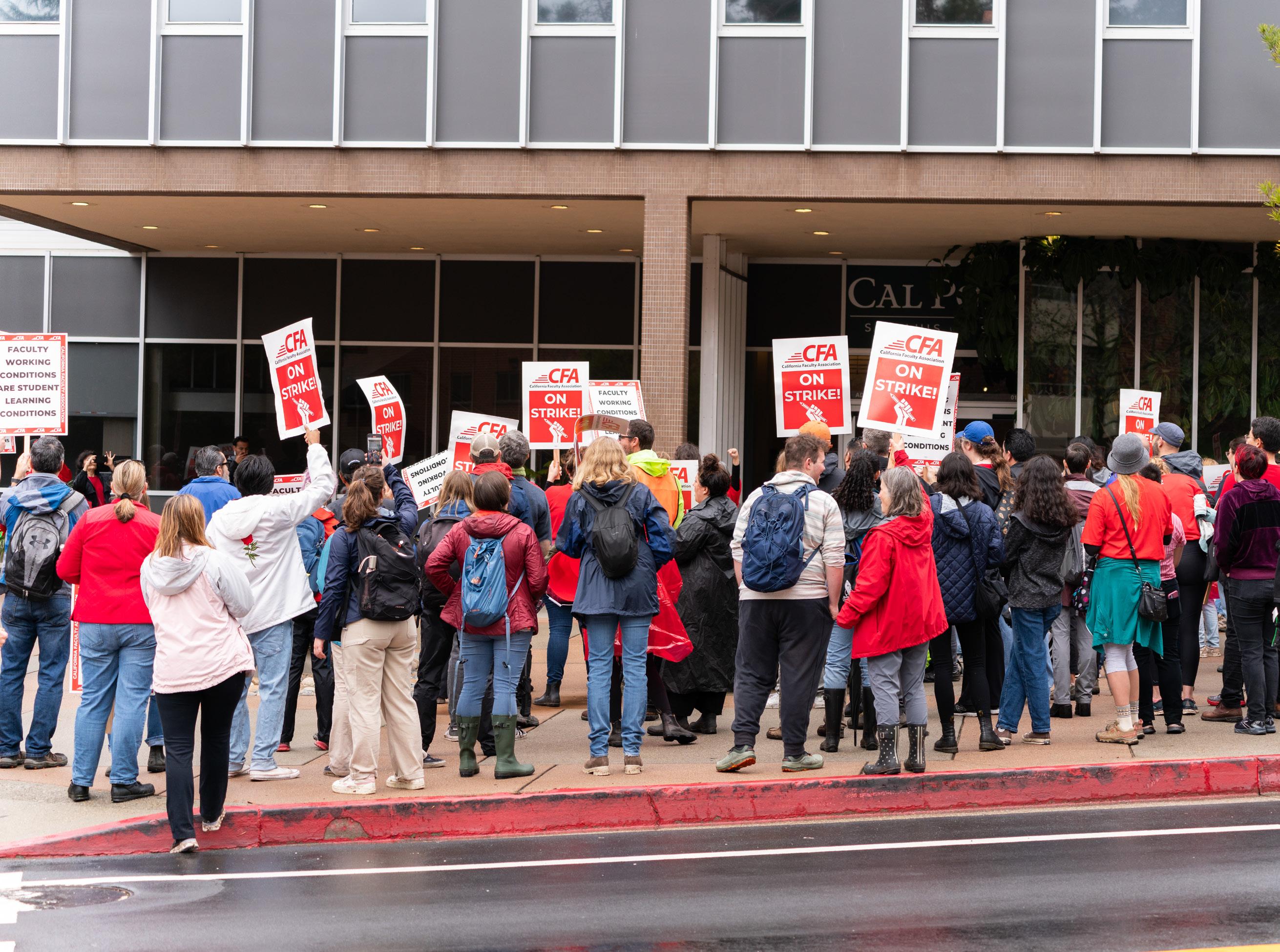
MUSTANG NEWS TUESDAY, MARCH 5, 2024 NEWS 4
Where to find addiction recovery resources on Cal Poly’s campus
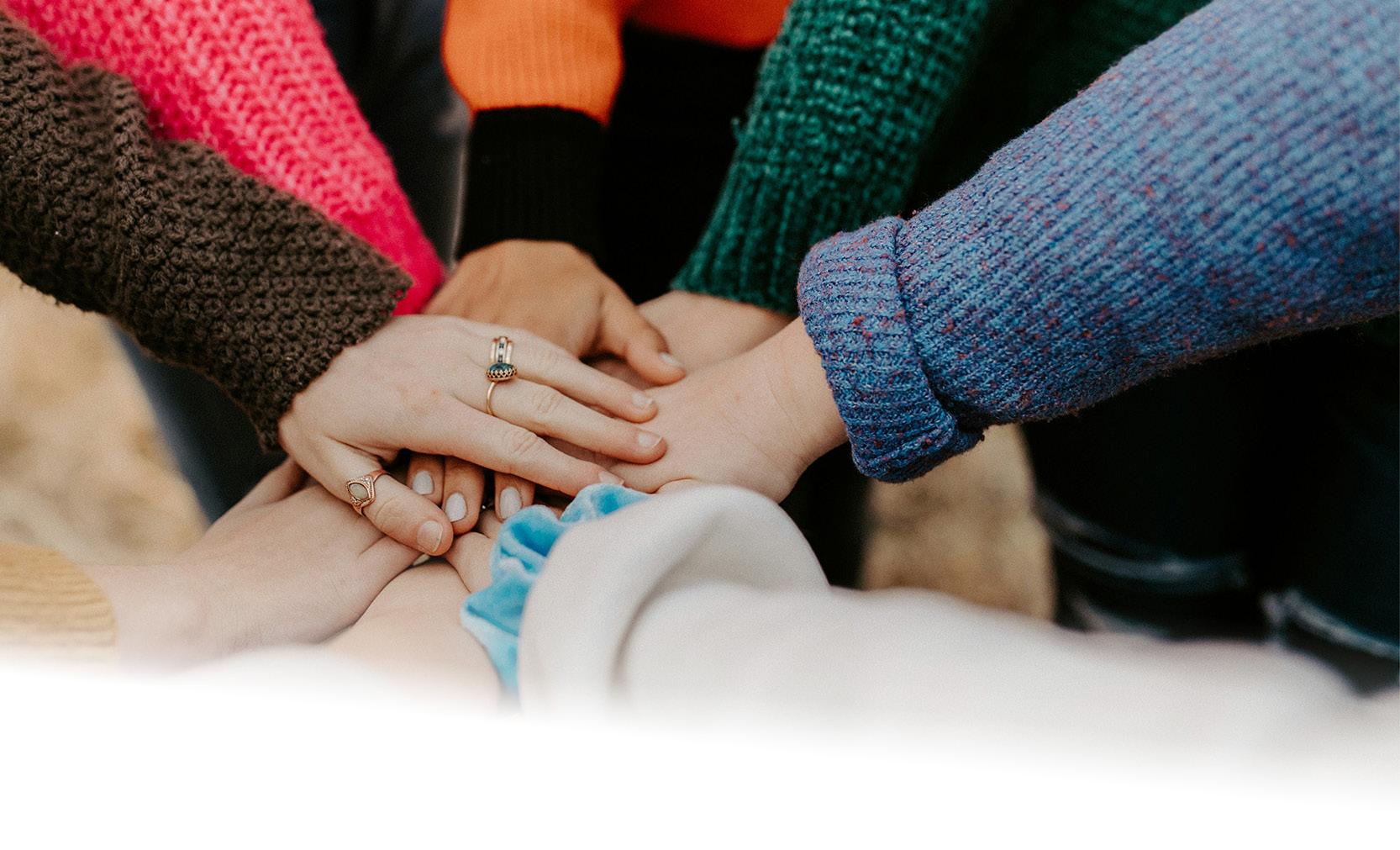 BY ASHLEY BOLTER
BY ASHLEY BOLTER
When Davis Henegar needed to take a leave of absence from Cal Poly to get inpatient treatment for his addiction, his parents weren’t sure if he would be able to go back.
Upon his return, Cal Poly offered to give him as much support as they could, but there wasn’t a community of students that Davis could really connect with in his recovery — so he started his own.
“I cannot say enough good things about how Cal Poly supported him,” Davis’s mom Traci Henegar said.
Davis started Mustangs for Recovery in 2018 to create a safe space on campus for students in recovery from addiction, according to the Mustangs for Recovery introduction video on their webpage.
In the beginning, it was just a couple of students going to the meetings, but it started taking off after about a year, according to Traci Henegar.
In the six years since, Mustangs for Recovery has grown with more meetings and events, support staff and medications such as the newly added nicotine patches and gum available to purchase over-the-counter at the Cal Poly Pharmacy.
Mustangs for Recovery and Cal Poly Health and Wellbeing offer “ample opportunity” for every student in recovery to get the resources they need, according to Cal Poly’s alcohol and other drug health educator Andre Sillas.
There are varying reports on how
many students are in recovery at Cal Poly. According to Sillas, 8% of the freshman class are in recovery and an American College Health Association survey done in spring 2022 found that 1.4% of Cal Poly students are in recovery.
Sillas said that depending on where a student is in their recovery journey and what direction they want to go moving forward, students can take one of several paths.
One option is for students to get individual support either through a peer health educator or a professional health educator. Students can start by completing an anonymous self-assessment or by signing up for an appointment right away, according to Cal Poly Campus Health and Wellbeing.
Another option is to get group support through Mustangs for Recovery.
Mustangs for Recovery holds anonymous weekly meetings on Tuesdays and Wednesdays from 4 to 5 p.m. and Thursdays from 4:30 to 5:30 p.m. in the lower level of the Health Center (Bldg 27).
The Tuesday and Thursday meetings are similar to the traditional 12-step recovery programs, while the Wednesday meetings focus more on meditation and mindfulness, according to Sillas.
These weekly meetings continue via Zoom during the academic breaks as well, “just so that they’re staying on this routine and consistency of meetings and being a part of that supportive community, especially going
back home for breaks,” Sillas said. Mustangs for Recovery also hosts social events throughout the year, like arts and crafts, movie nights and kayaking in Morro Bay, according to Sillas.
What we’re trying to do is match the college experience, but from the framework of no pressure of being around substances or alcohol.
ANDRE SILLAS Alcohol and Other Drug Health Educator
Members of Mustangs for Recovery are also eligible to apply for the Davis Henegar Memorial Scholarship, which was started by his family after he passed away in 2021.
“It’s super meaningful for us because it means our son’s name is actively living on in this university that he loved so much and it also helps other students that have gone through a similar journey,” Traci Henegar said.
For Traci Henegar, addiction is a health issue and people who are
struggling with addiction need the appropriate support as they go through their recovery journey.
Supporting someone through their recovery journey is hard, she said, but it is important to trust one’s gut and be open to vulnerability.
“If you can find a way to be vulnerable with your family, with your community, with your friends, it ends up really helping a lot,” Traci Henegar said.
Students looking to support their friends who are struggling can get advice from counselors at the health center, Sillas said. He suggested students have a conversation with their friends about why they’re using substances and to point them to resources that could help.
College students have an especially hard time recovering from addiction, according to Sillas, but it’s still possible to get the full college experience.
After getting treatment, Davis Henegar was able to return to Cal Poly and graduate in 2020 with a degree in business, concentrating in information systems.
While his graduation ceremony was canceled because of the pandemic, his family still found a way to celebrate by holding their own graduation ceremony in the backyard of an Airbnb in San Diego.
His parents were the keynote speakers and they handed him a fake diploma when he walked across the patio stage in his cap and gown.
“He was so excited and we were so excited,” Traci Henegar said. “I’ll never ever forget that.”
MUSTANG NEWS TUESDAY, MARCH 5, 2024 FEATURES 5
Two Cal Poly professors saw a disconnect between science and Spanish: Here’s how they’re bridging the gap
BY JEREMY GARZA
When she first started teaching an Intro to Microbiology course, Cal Poly biology professor Dr. Alejandra Yep noticed there were a lot of inaccurate preconceived ideas about the subject among her students. She realized there is no microbiology in the science traditionally taught in K-12 education.
“People come already thinking things about microbes that are completely wrong, but they don’t even realize it,” Yep said. “This is really dangerous. The anti-vaccination movements are growing. People should know more.”
Yep decided to mitigate this knowledge gap. She went to her sons’ elementary school to teach a mini-lesson on microbiology. Students tested for germs before and after washing their hands with swabs and petri dishes.
Yep’s sons go to Pacheco Elementary School – a school with a bilingual education program two miles from Cal Poly. Instruction in this program begins in 90% Spanish during kindergarten and progresses to 50% Spanish and 50% English by fourth grade.
Almost instinctively, Yep taught the lesson in Spanish – Spanish is her first language and the language she speaks to her kids. Just as her students learned from her, Yep gained new insight from them.
With the “perfect partner” Jasmine Nation, Yep’s experience inspired the creation of Nuestra Ciencia in the spring of 2021, a club to bring more Cal Poly students to schools to teach science in Spanish. Nation, a
liberal studies professor who learned Spanish in college, teaches courses for future STEM educators.
Even though these bilingual elementary schools are designed to educate students in Spanish, science is not usually included as a lesson in Spanish, according to Nation.
“This is a unique experience that we’re providing for them to see that
One of the kids told me, ‘That was so much fun. I didn’t know that Spanishspeaking moms could be scientists. That’s the thing I couldn’t forget.
Poly student, she says they get excited about and engaged in the lesson.
Biomedical engineering junior and native Spanish-speaker Natali Seja started teaching as part of a BEACoN research role and later Nuestra Ciencia. While working with the students, she found that it was often simple to form relationships with the students.
“When we would say, ‘Oh, we’re from this part of Mexico’, a lot of them would be like, ‘Oh, that’s where my parents are from,’” Seja said. “Automatically, you’ll get that little connection. So when you work with them in groups, they’ll want to talk to you and try to get to know you.”
Seja added that even the students who struggle working in a classroom setting are usually engaged with Cal Poly students due to the connections Spanish-speaking creates.
After a few years of visiting schools with a small group of students as a club Yep and Nation started a Spanish section of “SCM 302: The Learn By Doing Lab Teaching Practicum” during winter 2023 – a class designed to teach students how to teach science.
DR. ALEJANDRA YEP Cal Poly biology professor
science doesn’t have any language,” Nation said. “You are a scientist just by being curious about how the world works.”
Yep believes Cal Poly students have a celebrity effect on the younger students. Every time a younger student is taught a lesson by a Cal
SCM 302: THE LEARN BY DOING TEACHING PRACTICUM
In Building 53, Yep and Nation teach a class that looks like many other classes at Cal Poly. Students sit in groups clacking away on laptops – some are seated in front of microscopes and others sit around a collection of moldy petri dishes.
This section of The Learn By Doing Lab Teaching Practicum
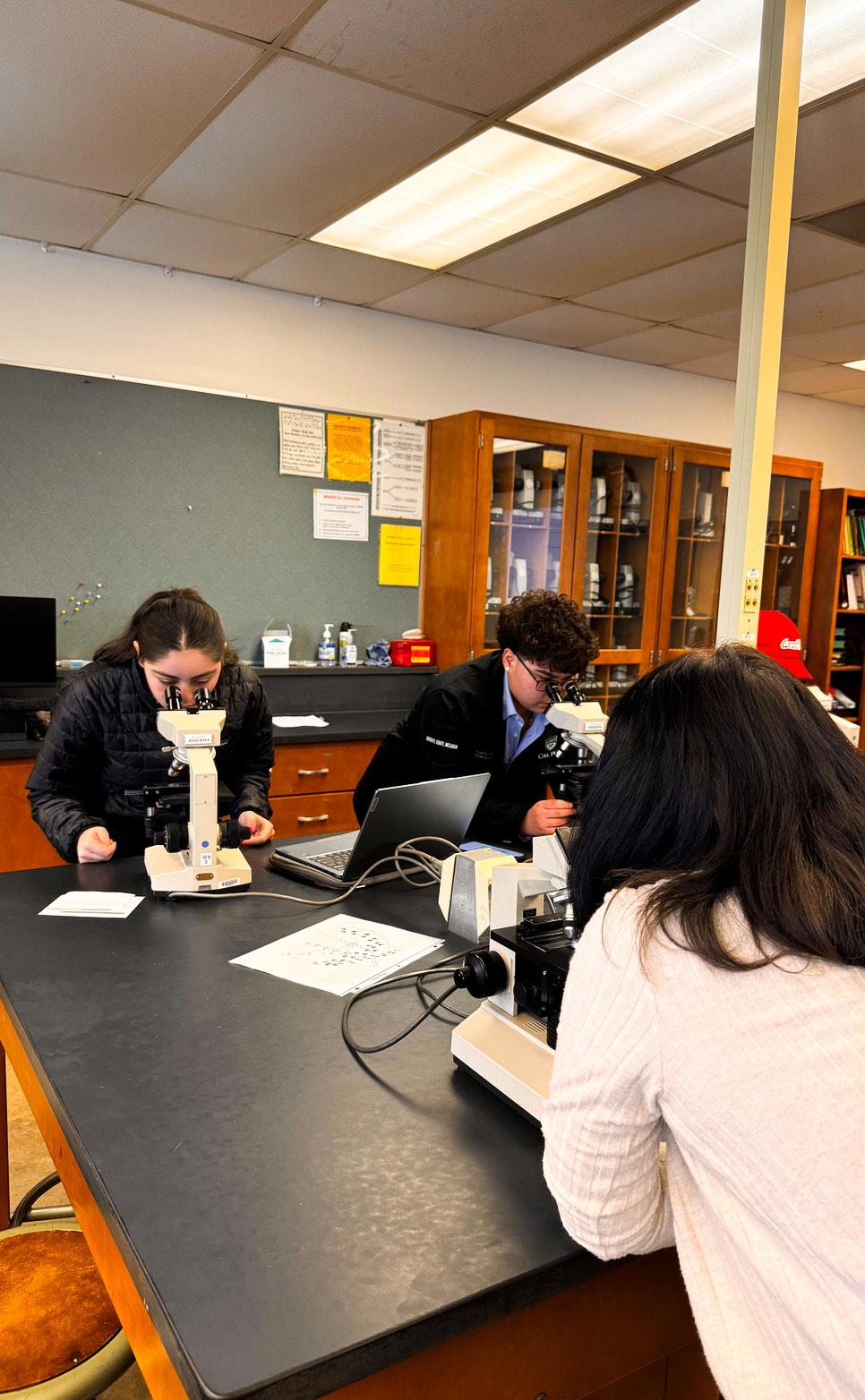
MUSTANG NEWS TUESDAY, MARCH 5, 2024 THE HILL 6
JEREMY GARZA | MUSTANG NEWS
Natali Seja (Left) looking into a microscope that elementary school kids will get to use when they visit Cal Poly.
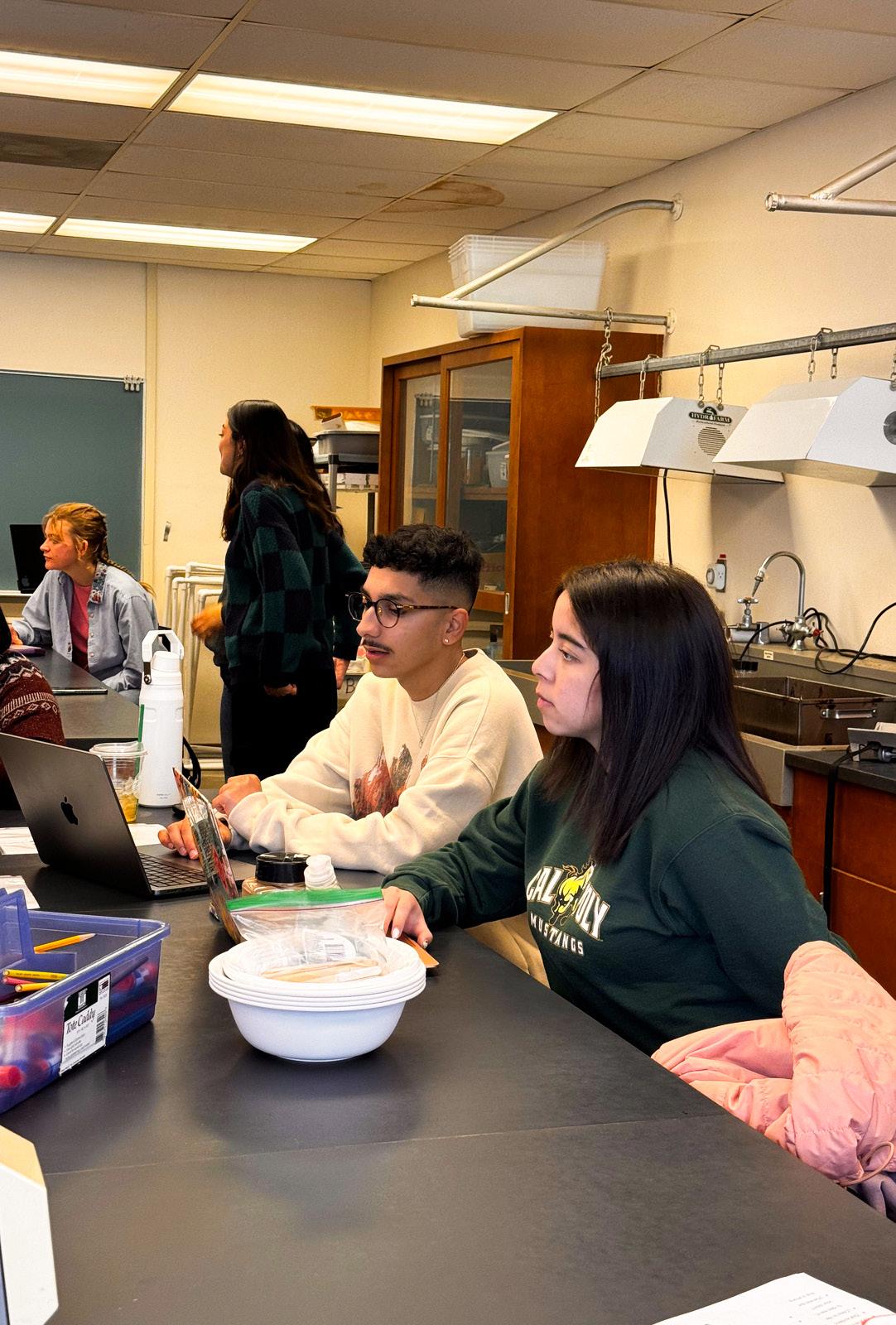
(SCM 302) is unique not because of how it looks, but because of how it sounds. Spanish is used in Yep and Nation’s lectures, class presentations and non-academic conversations between students.
“I think it’s the first class at [Cal Poly] that is run in Spanish, but the subject is not Spanish,” Yep said. “We’re not teaching the Spanish language here. The students need to be proficient enough to be able to communicate verbally in Spanish.”
These Cal Poly students learned Spanish in a variety of ways, at home, in school or while abroad. The course spends the first few weeks preparing lessons to be taught in Spanish to students from schools with a bilingual program, like Pacheco Elementary School.
Liberal studies senior Ana Banuelos grew up speaking Spanish at home like the students in these bilingual programs. There was always a barrier when she would get home after school and try to talk about what she learned that day.
“I never told my parents what I did at school because I didn’t want to translate,” Banuelos said. “It felt like so much. The idea that these kids will be going home to their parents that speak Spanish with something to talk about is pretty cool.”
There is often a disconnect between native Spanish-speaking students
the family or friends self speaking Spanish.”
Yep also thinks this program has helped reconnect to Spanish in ways she has not been able to for years.
“It’s a good feeling to be teaching science in Spanish because when I left Argentina I also stopped using Spanish for science,” Yep said. “Microbiology can be in Spanish. I haven’t done that since I was an undergrad. I use it to talk to my kids or to my friends, but not for academics.”
SERVING HISPANIC STUDENTS AS AN INSTITUTION
Nuestra Ciencia and the Spanish section of SCM 302 are among the spaces for Spanish-speaking students at Cal Poly as the University moves towards becoming federally designated as a Hispanic Serving Institution (HSI).
As of 2022, Cal Poly’s Latinx enrollment was 21.1% of total undergraduate students, according to the HSI executive summary report, and 24% of the latest class of admitted students identified as Latinx according to the Office of University Diversity and Inclusion (OUDI).
“The classification as an HSI, sadly, is based on a percentage of enrollment,” Yep said. “There’s nothing built into the definition of becoming an HSI that says that you actually have to serve them.”
and their families when they learn at an English-taught school. This program helps some undergraduate students talk about academics with their parents for the first time, according to Nation.
“Students have said, ‘This is the first class that my mom was really invested in and wanted to hear more about,’” Nation said. “Or ‘I would ask for help with translation and my mom was like, see, your Spanish is important.’ This is the way they would have liked to learn science. It’s really empowering for [them] to be a role model and teach other kids in the way that [they] would have wanted to.”
Beyond inspiring young Spanish speakers, this project shows the native Spanish-speaking undergraduates involved in it a new reality: academics in Spanish. Teaching in Spanish helps students build a bridge between the Spanish speaking self they use around their family or friends and the English speaking self they use in school, according to Yep.
“Spanish is a language that is not just to talk about foods and family things,” Yep said. “It’s a full fledged language that can be used for anything. [This program] helps many students with this dissociation between the academic person they make speaking English and
a community.
“We’ve heard over and over again, ‘This is the first time I felt like I belonged at Cal Poly,’” Nation said. “[They say,] ‘This is something where I feel like I’m making a difference. I’m giving back to my community. I’m part of a research group. I’m part of a teaching group.’ I think more programs that help students to feel like they’re contributing are needed.”
This quarter is the second quarter that a Spanish section of SCM 302 was offered. After the first section of the course, Yep and Nation received “super emotional” and “impactful” feedback.
“They were sharing all these personal things about what it meant to be teaching in this language,” Nation said. “One of our facilitators said, ‘I never had this experience and I would have benefited so much as a child. It was so great for me to be able to do this because I felt like I was healing my inner child.’ ”
Throughout her career, Nation has studied and researched science education. She has found that a lot of students, specifically women, students of color and students of different ability, are pushed out of science. They often think it is because
they simply are not scientists, but Nation disagrees.
“A lot of students will come in scared of science or they’ll say, ‘I’ve never liked a science class,’” Nation said. “That’s because the class wasn’t taught the right way. Not because you’re not a scientist. Kids are natural scientists.”
Yep never wants a language barrier to stop a child from thinking they could become a scientist. She also never wants them to think they cannot pursue a higher degree because they speak Spanish at home.
“Families said, ‘Well college is not for us,’” Yep said. “But why? Why is it not for you? If it’s not for you because you prefer to do another thing, then okay. But if you think it’s not an option for you, then I have issues. It should be an option that you don’t need to choose, but it has to be a viable option.”
Nation and Yep hope to use this program to teach future educators how to create inclusive science instruction to make all students love science, even the students whose first language is not English.
The only requirement to be granted HSI designation is for eligible universities to have enrollment of undergraduate full-time students that are at least 25% Hispanic, according to the U.S. Department of Education.
“Here at Cal Poly, I think the people involved in this process are very cognizant of this and that we’re going to actually become a Hispanic Serving Institution, emphasis on the serving part,” Yep said.
Yep was born and raised in Argentina. Her family spoke Spanish, her community spoke Spanish and, most notably, her educators spoke Spanish. When she first came to San Luis Obispo, she did not realize the significance of being a Spanishspeaking academic.
Liberal studies senior April Valdez Garcia found it hard to get involved at Cal Poly as a transfer student. After her classes, she would immediately go back to her home in Santa Maria, until a friend convinced her to join Nuestra Ciencia and SCM 302.
“My Spanish isn’t the best,” Valdez Garcia said. “It’s a community where I can come in and they don’t judge me on my Spanish. I really enjoy coming to Cal Poly now because it’s a community for people that speak Spanish in any way. The experience of teaching Spanish is giving me a lot of confidence.”
Students like Valdez Garcia involved in Nuestra Ciencia have felt supported in this space and a part of

MUSTANG NEWS TUESDAY, MARCH 5, 2024 THE HILL 7
Ana Banuelos (Right) discussing petri dishes with her small group for their upcoming Spanish science lesson.
April Valdez Garcia (Middle) practicing her presentation about mold on refrigerated and unrefrigerated strawberries.
Local ‘Paws to Read’ program helps kids with reading anxiety
BY KATHERINE LU
Berkeley, an 11-year-old golden labrador mix, comes to the Los Osos library every Wednesday to provide a comforting ear for kids with reading anxiety.
The Paws to Read program was started around eight years ago by Kathy Baker, Berkeley’s owner and handler. According to Baker, the objective of the program is to provide non-judgemental support for young readers afraid of reading in front of others in order to boost their self-confidence.
Baker was living in Simi Valley when she was first introduced to the Paws to Read concept. She discovered a similar program in a private school in the area and thought such a program would be a good fit for Berkeley.
Before Baker and Berkeley met, Berkeley was dropped from a seeingeye dog program because “she didn’t want to wear the harness,” Baker said.
Berkeley came into Baker’s care through a common connection, the woman who rehomed the dogs that participated in the program. Baker then put Berkeley through the Therapy Dogs International Program, where she passed a series of stringent tests to become a therapy dog. Berkeley was also required to pass the Canine Good Citizens test to ensure she presented no aggressive behavior around humans or other dogs.
Baker then relocated to the Central Coast, where she joined a Paws to Read program with Berkeley in Morro Bay. She then started one in Los Osos and similar programs have
been popping up around the area –Cayucos now has a reading-to-dogs program of their own.
fear making mistakes.
Berkeley has also been known to soothe anxious readers with her mere presence.
“There’s been numerous studies on how just petting a dog lowers your blood pressure,” Baker said.
Reading to Berkeley gives the kids a really positive thing to associate with reading.
BONNIE RICHAN
During her hour at the library, Berkeley lies down on the carpet, allowing young readers to tell her a story without giving them reason to


Baker has seen the same kids come in to read to Berkeley for years and eventually develop enough confidence in their reading abilities to stop coming.
Bonnie Richan, the library’s branch manager, has worked at Los Osos for a little over two years, seeing improvement in both attitudes toward reading and reading skills as a result of the Paws to Read program.
Richan recalls a girl that read picture books to Berkeley during her initial visits to the library who now reads Berkeley full chapters from juvenile fiction books.
Richan often hears Baker tell kids, “You’ve become such a good reader,” as she’s watched them evolve over the years.
ESCANEÉ AQUÍ PARA LEER LA VERSIÓN EN ESPAÑOL

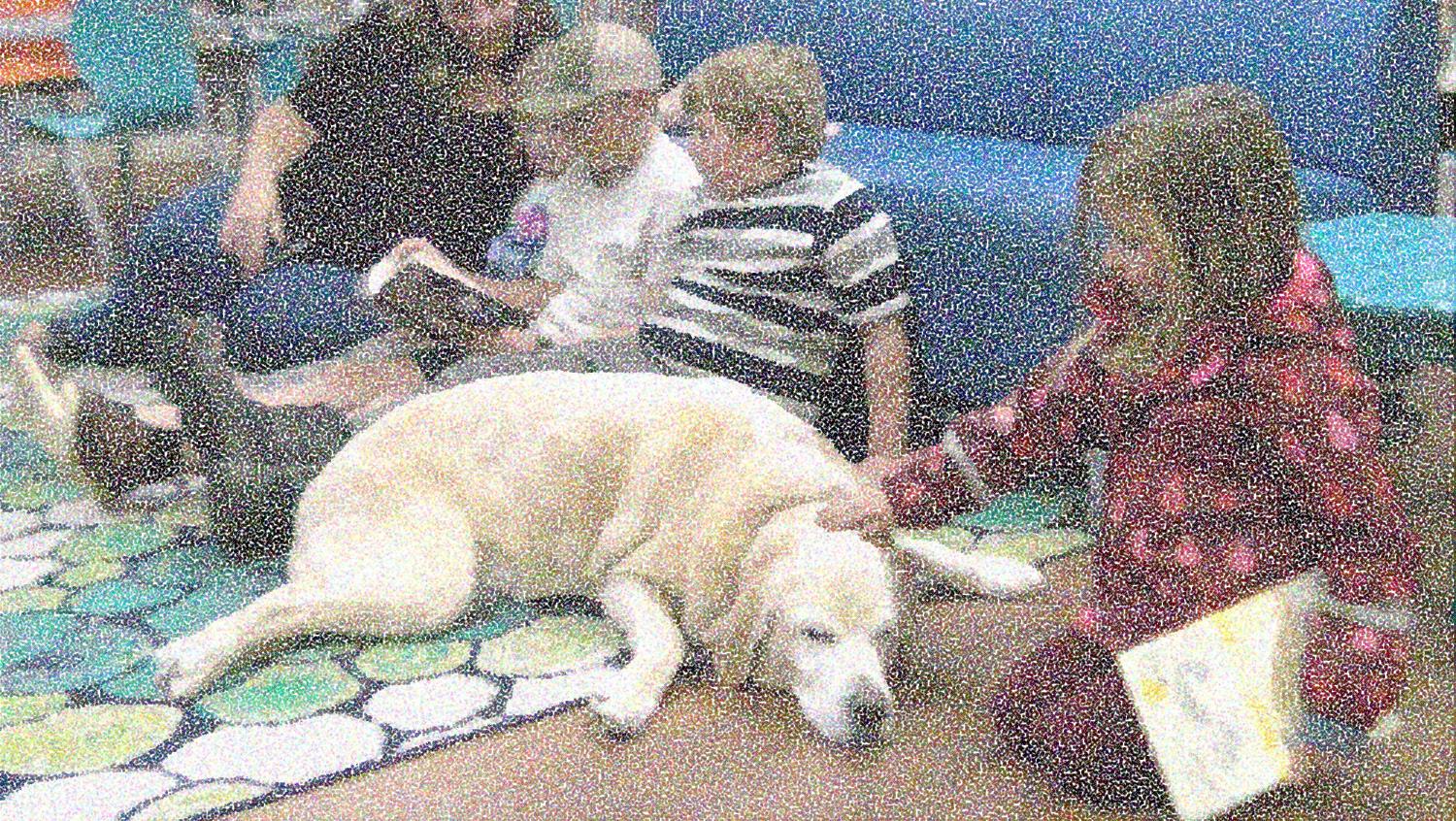

MUSTANG NEWS TUESDAY, MARCH 5, 2024 FEATURES 8
RJ POLLOCK | MUSTANG NEWS
SCAN TO WATCH THE VIDEO

How a Cal Poly math professor creates art through the perfect slice
BY COLE PRESSLER
Jonathan Shapiro’s backyard overlooks the grass fields at the school where he’s taught math for more than a quarter-century.
On a table in that backyard, he’s laid out several tools for his task ahead — flour, bowls of ingredients, a clean cutting board, a pizza shovel and a handheld cutter.
All of these are crucial instruments for a man who leaves friends and coworkers awestruck at how he uses them to transform dough, sauce and cheese into something magical.
Born in New York City, Shapiro was surrounded by pizza his entire life. He moved to Berkeley as a child but never lost the love for the food that he developed in his native city.
In early February, Shapiro hosted
several colleagues from the Cal Poly mathematics department in his backyard, where they sampled five of Shapiro’s creations.
Shapiro caressed the dough gently with his hands silently except for his short deep breaths. He had spent three days preparing the dough balls beforehand.
The NYC native uses sauce made with Italian San Marzano tomatoes, his cheese from the country’s parma region – even the flour he uses to make his dough is from the Mediterranean country.
“It just shows the care and love in preparing [the pizza],” Elsa Medina, another math professor, said.
After doling out sauce, laying out cheese in a careful pattern and drizzling the pie with oil, he slides it into his Zio Ciro pizza oven, handcrafted
Mathematicians often keep in a world very much away from regular people, but pizza making’s the opposite, everyone can appreciate that.
JONATHAN SHAPIRO Professor of mathematics
with refractory concrete on the Italian island of Sardenia, which reaches nearly 900º F and cooks pizzas in just two minutes.
Shapiro bought the oven a few years ago, during the COVID-19 pandemic, when he decided he wanted to step up his passion for the food. YouTube was his main instructor for learning traditional Italian pizza-making methods and he’s since mastered the traditional Neopolitan style.
But he didn’t stop there.
Shapiro makes everything from a fig-and-goat-cheese pizza – using fresh figs from a tree about ten feet from the pizza oven – to a dessert pizza with strawberries, Nutella and blueberry chèvre.
“You can take any ingredients you like,” Shapiro said. “It’s not a hard thing to make something that tastes good.”
In some ways, Shapiro’s pizza-making is his second form of art.
Shapiro said that despite what many people may think, math is an extremely creative field. Mathematicians have the ability to analyze models and constructions that have never been seen before and then create proofs for these models in any way they want to.
His research focuses on topics like Operator Theory, a type of functional analysis that builds the basis for quantum mechanics.
Besides connecting him with “regular people,” pizza making is freeing in a way for Shapiro. For him, there’s no topping too daunting, no style that he won’t try. It gives him a sense of freedom.
“I love everything about it,” Shapiro said.


MUSTANG NEWS TUESDAY, MARCH 5, 2024 FEATURES 9
JONATHAN SHAPIRO | COURTESY
JONATHAN SHAPIRO
SCAN HERE TO WATCH
Let’s talk about why you wear your Blundstones
BY TESS WHITSETT
Tess Whitsett is an Environmental Management and Protection senior and Mustang News opinion columnist.
The opinions expressed in this article do not necessarily reflect those of Mustang Media Group.
In American slang, an individual who is “granola” is visibly outdoors.
The aesthetic often involves sporting brands such as Patagonia, Blundstone, REI, Teva and more, all while exploring picturesque places.
Surfing Instagram is a good way to determine if someone fits the bill.
These brands are tied heavily to the environmental movement because they create gear highly functional in our exploration of natural spaces and oftentimes have lifetime warranties and repairs.
This is an appealing thought when carving out the large up-front investment, knowing it will be worth the years of future use. Those of us that subscribe to this aesthetic may actually be more conscious of our meat consumption, single-use plastic and reef-safe sunscreen than the average person, but let me get this straight – “granola” is not the same as “environmentally-friendly.”
The rapid expansion of the fashion industry, fueled by the rise of
fast fashion from TikTok trends, has led to a profound textile waste crisis for our environment. This problem manifests in ecosystem degradation, social injustices and according to the United Nations, 10% of our global greenhouse gas emissions each year due to its long supply chains and energy intensive operations.
This is not necessarily at the fault of the individual. There is and has been a deeply ingrained culture of consumerism tied to the environmental movement due to the influence of social media and peer perception.
Fast fashion is a large offender, but the outdoor apparel industry falls victim as well.
Industrial Engineering
junior Sean Ruiz believes that, “many individuals
now purchase outdoor apparel as a fashion statement or trend rather than for its intended functionality,” which for him is skiing, mountain biking, camping and hiking. He also wonders if his favorite outdoor apparel brands, “fully recognize that a significant percentage of their increased sales stem from consumers seeking fashion rather than performance.”
This poses problems for our environment because although Patagonia, KUHL, REI Co-op, Cotopaxi and others make efforts to offset their business practices with behaviors that benefit the environment, they are still over-con -
sumed due to the influence of peer perception on individual decision-making, especially on our campus.
These brands have become a symbol of moral and wealth status in our campus community, but they should be acknowledged for their efforts for the planet instead. Is it not hypocritical to use clothing intended to get closer to nature to instead amass popularity points while simultaneously increasing our carbon footprint?
According to B Lab Europe, “certified B Corporations, or B Corps, are companies verified by B Lab to meet high standards of social and environmental performance, transparency, and accountability.” B Corp certified businesses, such as Patagonia and Athleta, are certified by B Lab as having made significant leaps to conduct business in an ethical manner that does not significantly degrade the environment, and are given a score for their efforts.
With rampant over-consumption and textile waste plaguing our planet, we ought to take
certifications like these in mind when making purchasing decisions because they are paving the way to a more efficient and ethical economic system in America.
To fight over-consumption in any sphere of life, we must question if we need something, or if we want it. And if we decide we want it, why? Why do we buy our Blundstones? Is it because they are a high-quality shoe, waterproof up to the elastic that will last us well into the next decade? Or because we want to be perceived by the folks we surround ourselves with as being a part of the environmental movement?
Let me emphasize that as a living and breathing human, we are constantly subjected to what is “the right way to live,” and as we age, we realize there is no such thing. We are all doing our best to curb our anxieties about climate change and our negative impact on our planet. With this in mind, we definitely should not feel we need a four-wheel drive, name-branded clothing and a fresh pair of leather boots to feel valid in our exploration of the outdoors. Our natural spaces are home to us all and are accepting of any person daring enough to exist alongside them.

MUSTANG NEWS TUESDAY, MARCH 5, 2023 OPINION 10
Construction problems create possible delay of John Madden Football Center Construction problems create possible delay of John Madden Football Center
BY AMMAR KHAN
At halftime during a Big Sky Conference matchup against Sacramento State on Oct. 1, 2022, President Jeffrey Armstrong revealed plans for a project that would provide the football program with a new facility for players and coaches: The John Madden Football Center, a facility that would pay homage to their football program’s past and brighten their program for the future.
The two-story, $30 million facility would serve as the program’s new headquarters, named after Cal Poly alumnus and NFL Hall-of-Fame coach and broadcaster John Madden. The center would sit in the south end-zone of Mustang Memorial Field, facing the Mustang Memorial Plaza, and include amenities such as a new locker room, weight room, strength and conditioning facilities and a nutrition bar for players.
Despite contributions from the Madden family and other football alumni, the department was still roughly $6 million short of its initial $30 million goal at the time of announcement. Those in attendance were asked to consider providing a contribution by donating funds to the program.
Although the department was short of its goal, construction for the project still began and is planned to open prior to the 2024 season, according to Go Poly.
However, months after the season’s conclusion, the athletic department is still short of its fundraising goal.
Additionally, the project is behind schedule, making it unclear if the center will be ready for the 2024 season.
Cal Poly’s athletic director, Don Oberhelman, said several factors contributed to the delay.
Pipe-wire cable tubing, which runs most of the sewage that enters and exits campus, was also found in the
space near the end zone, according to Oberhelman.
As a result of the expenses caused by the bedrock and infrastructure, Oberhelman said that an additional $5 million was added to the budget.
“It’s going to be north of $30 million,” Oberhelman said. “It’s probably going to be closer to $35 [million] before we are all done.”
One of the biggest problems we found is the site down there, there’s bedrock that is causing us a lot of problems.
DON OBERHELMAN
Cal Poly director of athletics
Oberhelman said that the possibility of an increase in spending was expected when the project was initially planned, though the increase was higher than expected.
Additionally, Oberhelman says that the rise in the project’s cost will ultimately ensure the Madden Center meets the original project plans. He said that by cutting costs, amenities such as the weight room would lose the features that would have made it an upgrade in the first place.
“We basically would have wasted money and we can’t do that,” Oberhelman said. “That’s why the pressure is on us to increase the revenue to try and make sure we get what
we want.”
Even with the center still undergoing construction, Cal Poly Athletics pitched the John Madden Center to potential recruits to draw interest to the program.
IMPACT ON RECRUITMENT
In the past two offseasons, the Mustangs have put together backto-back top-five recruiting classes in the FCS, according to 247 Sports and Hero Sports. In this past signing period, the Mustangs put together the No. 3 overall recruiting class.
Redshirt sophomore Reed Shumpert, a wide receiver who transferred to Cal Poly from Washington State in the summer of 2022, said he first heard about the center during his recruitment trip. After taking a tour of the campus, Shumpert and other players who were present during the recruitment trip were shown a YouTube video that showed a digital replica of the center.
“The biggest thing they were selling us on was the brand new locker room,” Shumpert said. “We would each have our personalized locker. We are also going to have a new weight room. We’ll also have a new entrance to run out of once the Madden facility is built. And just the training rooms and the meeting rooms that are being built for us.”
Shumpert says he was unaware of the project’s recent setbacks.
HOW WILL THE CENTER BENEFIT PLAYERS?
With their current accommodations, players have to go to several different locations for resources.
The locker room is near the swimming pool, practices are held at Mustang Memorial Field, the weight room is in a facility directly across from the stadium, and the treatment and recovery rooms are in Mott
Cal Poly Athletics was short of the proposed $30 million budget when they announced the John Madden Football Center in October 2022.

Athletics Center.
Shumpert said that the John Madden Center will make it easier for players to fulfill their needs as everything will be available in one location, which could also help build team chemistry.
Redshirt junior long snapper Cruz Rubio also said that the center will help players get what they need in a more efficient way.
“Right now, guys are walking from the locker room down to the field in their full gear and everything,” he said. “Then they got meetings in some random classroom. Nutrition stations are going to be huge.”
WHERE THE MUSTANGS STAND NOW
It’s no secret that the Mustangs have struggled in the win column in recent years, but in one of the best FCS conferences in the country, the
Mustangs have continued to take incremental steps on the field. Even in losses to top 25 programs like Sacramento State, Montana State and Idaho, the Mustangs showed they could compete with some of the best FCS teams in the country in stretches. However, inconsistency still plagues the team due to a lack of depth and a young team across the board.
With the new facility on the horizon, the team is hoping its resources will help draw in the talent necessary to keep taking steps forward and compete with other colleges.
“The John Madden Football Center is just gonna put us on par with all the colleges across the country,” Wulff told Mustang News in 2023. “It’s going to be one of those things where once it’s complete, it’s not going to only help the people on campus, but attract new, young football recruits to Cal Poly.”

MUSTANG NEWS TUESDAY, MARCH 5, 2024 SPORTS 11
ALICE SUKHOSTAVSKIY | MUSTANG NEWS
There have been delays in the center’s construction, putting into question whether it will be open in time for the start of the 2024 season.
CAL POLY ATHLETICS | COURTESY
‘He wants to be great’: How Tate Shimao cemented his spot on Cal Poly Baseball
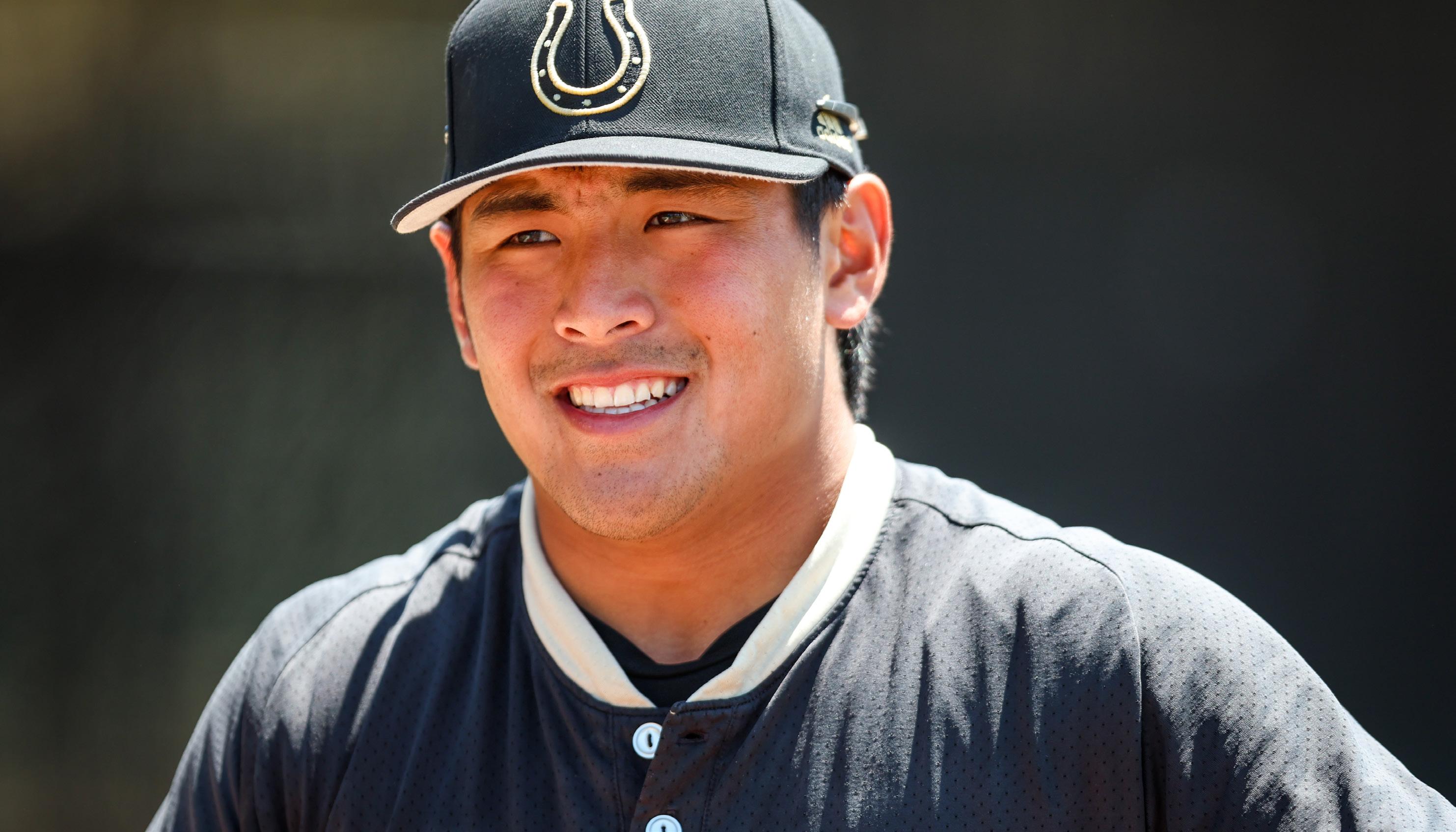
Cal Poly baseball player Tate Shimao looks to be a big contributor for the team in 2024.
BY DYLAN ALLEN
As the sun dips below the hills behind Baggett Stadium, the fluorescent lights of the batting cages buzz overhead, illuminating the green turf below.
Inside, teammates flip each other balls from a few feet away. Pings ring off across the empty field and balls fly to the back of the net, dropping below to the turf.
Sophomore Tate Shimao is one of those players who remains after practice. Once the bucket empties, he and fellow sophomore Wyatt King pick up the balls for another round of soft toss.
For Shimao, it’s routine: get a little better every day. Settling into a routine is something Shimao has practiced his whole life – it’s essential to who he is.
“He’s possibly the hardest worker that we have on our team and it was evident last year,” Cal Poly baseball head coach Larry Lee said.
SHIMAO’S FRESHMAN SEASON
Starting as a true freshman is rare. Shimao, King and sophomore Evan Cloyd were the only three to do so last year. Shimao got the nod due to how he practiced at “full-go game speed,” according to Lee.
Lee awarded him the start at third base in the first game of last season against Missouri State. He got his first hit, knocking in two runs on a single to left field.
Lee continued to start Shimao at third base. After six games, he had a .296 batting average.
But, after the hot start to the 202223 season, the difficulties of starting as a true freshman started to pile up. He had 20 strikeouts in 16 games.
“For new players, everything you talk about is theory,” Lee said. “They haven’t experienced outside competition. The lights haven’t come on for real where wins and losses matter.”
For Shimao, this wasn’t theory; he was experiencing the ups and downs of playing a collegiate season.
After the Mustangs’ 16th game against Hawaii, his batting average dropped to a season-low .210.
“I would look up on the scoreboard, and you see your average just keeps going down,” Shimao said.
But he didn’t let it get to him. Instead, he looked at his struggles from a place of humility.
“I just had to take a step back and realize it’s a hard game,” Shimao said.
“I wasn’t preparing right. I wasn’t doing certain things right to put me in the best spot to succeed.”
Shimao went on to record 10 hits
over his next six games. In the sixth game at Long Beach State, their 22nd game of the season, he racked up three hits while also scoring three times.
“Just having lots of at-bats at the college level is a huge difference between just being a high school kid coming in and playing,” Shimao said. “So, just using that experience and failure to be able to, say ‘Whatever happens this year, I should be able to get through the ups and down.’”
COMMITTING TO BASEBALL
When Shimao joined ‘Iolani High School’s varsity team as a freshman, head coach Kurt Miyahira saw his
MUSTANG NEWS TUESDAY, MARCH 5, 2024 SPORTS 12
CAL POLY ATHLETICS | COURTESY
work ethic immediately.
“From the moment he was in our school, I noticed he was fearless,” Miyahira said. “He was confident, but he was fearless. He was willing to face any challenge head-on.”
‘Iolani, located in Honolulu, had a talented team when Shimao joined. They had not one, but two seniors drafted into the MLB right out of high school, according to Miyahira. They also had four seniors go on to play Division-1 baseball.
“He was surrounded by competition from the get-go and he embraced it,” Miyahira said. “He wanted to be great.”
With all the competition, Miyahira decided to move him to left field even though he was primarily shortstop.
“He responded well,” Miyahira said. “He competed every day, he worked his butt off every day, and he was a great teammate.”
Shimao’s commitment to constantly getting better allowed him to develop into a leader for his teammates, even though he wasn’t the most vocal player.
“He wasn’t necessarily a yeller or a rah-rah guy, just kind of leading by example,” Miyahira said. “He just got after it, and he was a great leader in that way.”
After his freshman year of high school, he decided to hang up his football cleats – and his commitment to baseball grew.
“For me, football, I kind of just
jumped into as something fun to do. But, baseball is my future,” Shimao said. “So, I just decided that it wasn’t worth the risk of getting hurt and hindering my development.”
According to Miyahira and “football people around Hawaii,” he would’ve been a Division I quarterback if he continued playing.
When he does something, it’s at a very high level with very high intensity and that’s difficult to do. But the players that approach practice and games like that, they stand out.
LARRY LEE Cal Poly Baseball Head Coach
But his mind wasn’t set on football. Miyahira reiterated that he stopped playing so he could travel more for baseball.
Then, during his senior year, he
moved from Hawaii to California so he could play at Rancho Cucamonga High School to get more exposure.
“He lived away from home as a high school senior to play the best brand of baseball possible,” Lee said. “That says a lot about a 17-year-old kid.”
Shimao’s transfer to southern California paid off. He received offers from Hawaii and USC, before finally catching the eyes of the Cal Poly staff.
“He’s the type of player that you want in your program,” Lee said.
HARD WORK RUBS OFF
As the Honolulu native continues building upon his prior season in preparation for the 2024 season, King is pushed by Shimao’s drive to get better.
“If he’s hitting after something, I see that and I go, ‘Okay, I should probably be hitting,’” King said, who started in 49 games last season.
Shimao and King were already close from being freshmen on campus together, experiencing things first-time college students go through. When the struggles of a long and grueling baseball season reached its peak, they were already well-connected.
“You have to lean on each other for support,” King said. “When you step on campus, you already have that connection, right? I think that’s the best part of having a team.”
Along with being there for support,
they’re also there to push each other to become the best players possible. The internal competition, according to King, helps build mental and physical “toughness” needed for a full season.
King reiterated the same message both of Shimao’s coaches did –how much he worked every day. Before or after practice, Shimao always gets his extra swings in the cages.
“He’s always working,” King said. “And for me, it’s great, because he helps me become the best version of myself.”
With Shimao’s work ethic and now a full season’s worth of experience under his belt, there’s a lot of room for improvement.
“It’s a difficult game, but experience is big,” Lee said. “And you usually see the greatest growth in their second year, so that’s what we’re hoping for.”
Even with the highs and lows of a difficult freshman season, the experience has prepared Shimao for the 2024 season. He knows he can keep working hard to be a key piece of getting Cal Poly baseball
back to a winning record.
“At the end of the day, however long he’s here and however he performs, he can look himself in the mirror and say ‘I did everything possible to become as good as I can be at the game,’” Lee said. “That doesn’t happen very often. He wants to be great.”


MUSTANG NEWS TUESDAY, MARCH 5, 2024 SPORTS 13
CAL POLY ATHLETICS | COURTESY Shimao made the switch from the infield to the outfield this offseason, similar to his high school career.
MIA-ISOBEL CRAIG | MUSTANG NEWS
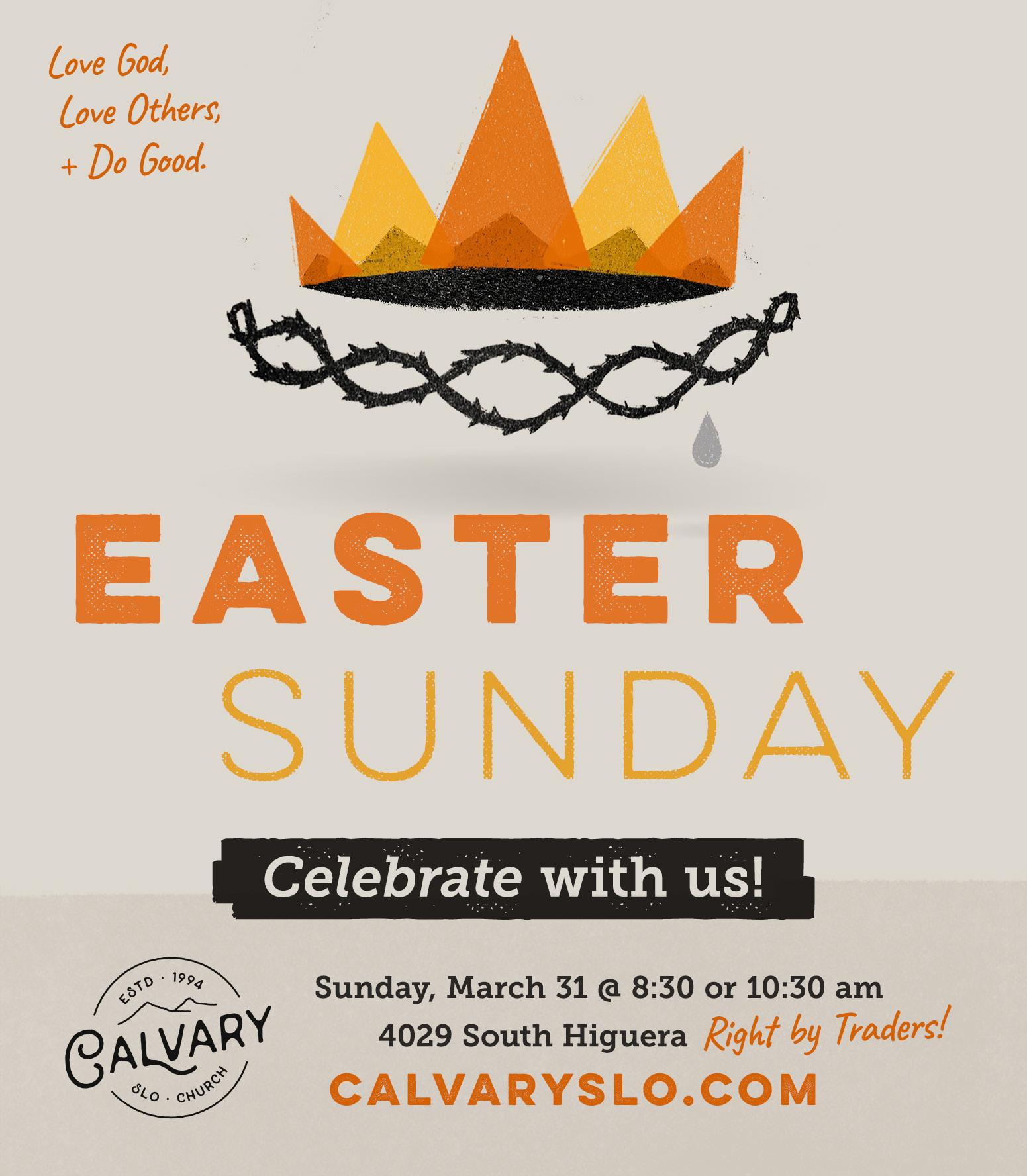

Student Ombuds Services is a safe place where students can seek confidential guidance on university related concerns or complaints.
An Ombuds is a neutral person who listens to a student’s issues or conflicts off the record and helps them to explore different solutions.
LOCATION: Building 26 Room 111
HOURS: Monday – Friday | 10 a.m. to 4 p.m.
VISIT: ombuds.calpoly.edu
E-MAIL: ombuds@calpoly.edu
PHONE: (805) 756-1380





$10 off your next 10 meals Terms apply. Offer expires 05/31/24. Taxes and fees still apply. Limited to $10 off next 10 orders, $25 minimum basket. Exclusions may apply. See app for details. ORDER NOW Use promo code: college24eats










 BY ASHLEY BOLTER
BY ASHLEY BOLTER























